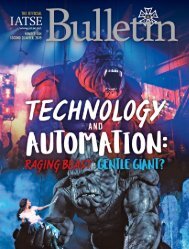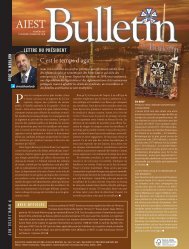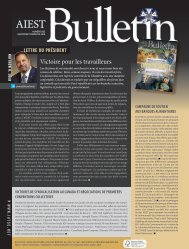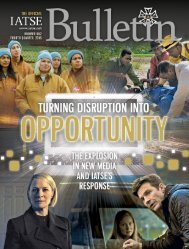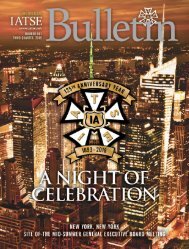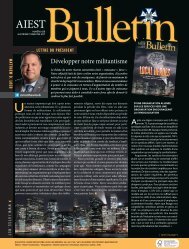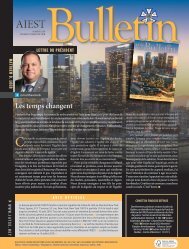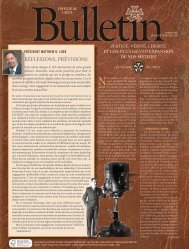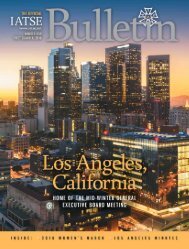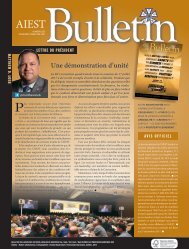IATSE-2nd2018_web
You also want an ePaper? Increase the reach of your titles
YUMPU automatically turns print PDFs into web optimized ePapers that Google loves.
ALFRED W. DI TOLLA — PIVOTAL LEADERSHIP<br />
Alfred W. Di Tolla helmed the <strong>IATSE</strong> during eight of its most pivotal years, from 1986 through 1994.<br />
During this time, which included <strong>IATSE</strong>’s Centennial, he made organizing a top priority and oversaw a membership<br />
increase from 60,000 members to 76,000 members. He encouraged more effective communications<br />
and made major investments in educating and training Alliance members. He spearheaded the historic<br />
NABET merger. And he negotiated fair contracts with superior pension and health and welfare benefits.<br />
President Di Tolla began his career as a Charter Member of the Broadcasting Studio Employees Local<br />
782, which he later merged into Radio and Television Sound Effects/Broadcasting Studio Employees Local<br />
844. He became a working member of Local One in 1955, and was a proud member of that Local until his untimely passing in 1994.<br />
In 1974, Di Tolla was appointed an <strong>IATSE</strong> International Representative, a position he held for four years. He was then appointed<br />
Assistant to the President, a position he held until he was elected International President by the General Executive Board in 1986,<br />
succeeding Walter F. Diehl. He was re-elected at the next three conventions in 1988, 1990, and 1993.<br />
Throughout his time in office, President Di Tolla had the support of <strong>IATSE</strong> members because his pledge to represent the best<br />
interests of his IA sisters and brothers was always at the forefront.<br />
Above all, President Di Tolla built for the future, and created the platform enabling his successors to take <strong>IATSE</strong> to new heights.<br />
His leadership, along with his strength and personal integrity kept the IA in a position of respect and prominence in the trade union<br />
movement and the entertainment industry.<br />
The movies began to focus on what was best about the<br />
medium, producing films that incorporated sound, color, and<br />
composition in ways that could not be achieved by television.<br />
Alliance members who had worked all their lives in the<br />
movie industry found themselves working in television, as new<br />
companies bought old film studios to make TV films. Among<br />
these were Revue, which bought the old Republic studio, and<br />
Desilu, which bought RKO.<br />
Decades later, it became common to see feature films that<br />
are less than a year old on television. Then it became common to<br />
rent them on videotape or DVD. And today, many movies can be<br />
live streamed the day they open.<br />
This practice helped studios make money, given the prospect<br />
of additional revenue when the movies are long gone from<br />
the theaters, enabling the production of more movies and<br />
generating more work for <strong>IATSE</strong> studio mechanics. However,<br />
it had an adverse impact on IA projectionists, since it has eliminated<br />
movie houses which played fourth or fifth-run films, as<br />
well as those that catered to revivals of past blockbusters.<br />
THE RENAISSANCE OF THE MOVIES<br />
In the 1960s and 1970s, the movies underwent a renaissance.<br />
Films like Bonnie and Clyde introduced a new kind of anti-hero<br />
to the cinema, as well as a new realism that required much more<br />
complex make-up, costuming, props and set design.<br />
Alliance camera operators and cinematographers found<br />
themselves asked to supply a whole range of effects, from slow<br />
motion to freeze frames and jump cutting. Some movies (The<br />
58




